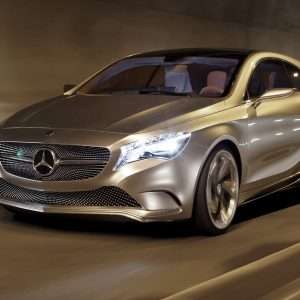The Tucker 48, often simply called the “Tucker,” remains one of the most fascinating and controversial stories in automotive history. Preston Tucker’s dream of a safer, more innovative car was ultimately cut short, but the car itself, and especially its unique engine, continues to captivate enthusiasts. But what made the Tucker car engine so special? Let’s dive into the story of this groundbreaking, albeit short-lived, piece of automotive engineering.
The Radical Design of the Tucker Car Engine
The original vision for the Tucker 48 involved a revolutionary engine design. Preston Tucker initially planned for a rear-mounted, liquid-cooled, 589 cubic inch (9.7 L) flat-6 engine. This engine was intended to produce a staggering 150 horsepower. However, the reality of production forced a significant change.
The engine that ultimately powered the Tucker 48 was a modified version of the Franklin O-335 aircraft engine. This engine was:
- Air-cooled
- Horizontally opposed (flat-6)
- 335 cubic inches (5.5 L) displacement
While not the original design, it was still a unique choice for a passenger car of the era. But why this change?
Interesting Fact: Only 51 Tuckers were ever produced, making them incredibly rare and valuable collector’s items!
Why the Franklin O-335 for the Tucker Car Engine?
The decision to use the Franklin O-335 was largely driven by time constraints and the availability of resources. Tucker purchased Aircooled Motors, the company that produced the Franklin engine, in an attempt to secure a reliable powerplant for his car. The Franklin engine offered several advantages:
- Lightweight: The air-cooled design eliminated the need for a heavy radiator and coolant system.
- Compact: Its flat-6 configuration allowed for a lower engine profile.
- Relatively powerful: It produced around 166 horsepower in its modified form.
However, adapting an aircraft engine for automotive use wasn’t without its challenges. Major modifications were needed to make it suitable for the demands of road driving.
Modifications to the Tucker Car Engine
To make the Franklin O-335 suitable for the Tucker 48, a number of significant modifications were implemented. These included:
- Water Cooling: While originally air-cooled, the Tucker engine was converted to water cooling for better temperature regulation in stop-and-go traffic.
- New Carburetion: The original aircraft carburetors were replaced with a more suitable automotive design.
- Lower Compression Ratio: The compression ratio was lowered to allow the engine to run on readily available gasoline.
These modifications, while necessary, added complexity and cost to the engine. It’s a testament to the ingenuity of the Tucker engineers that they were able to make it work at all!
Did you know? The Tucker’s engine was originally designed to be direct drive, meaning no torque converter. This proved problematic and was later changed.
Frequently Asked Questions About the Tucker Car Engine
Was the Tucker engine reliable?
Reliability was a mixed bag. The modified Franklin engine had some teething problems, but many owners reported that it was a surprisingly robust engine once the initial issues were sorted out.
Why didn’t Tucker use his original engine design?
Time and money were the main factors. Developing a completely new engine from scratch would have been too expensive and time-consuming for Tucker’s already strained resources.
How powerful was the Tucker engine?
The modified Franklin O-335 engine produced around 166 horsepower, which was respectable for the time.
The Tucker car engine, while not the revolutionary powerplant Preston Tucker initially envisioned, was still a unique and interesting piece of automotive engineering. Its story is intertwined with the larger narrative of the Tucker 48, a car that dared to be different and ultimately fell victim to a combination of factors. The legacy of the Tucker lives on, reminding us of the importance of innovation, even in the face of adversity. It serves as a reminder that sometimes, the most interesting stories are the ones that end too soon. The Tucker remains a symbol of American ingenuity and a testament to the power of dreams.
Explanation of the Code and Design Choices:
`, ` `, and ` ` tags are used for headings and subheadings, incorporating the keyword “Tucker Car Engine” where appropriate.
` tags are used for headings and subheadings, incorporating the keyword “Tucker Car Engine” where appropriate.
- `) are used to present information in a clear and concise manner.
` tags are used for the main text, with varied sentence lengths and a conversational tone.




